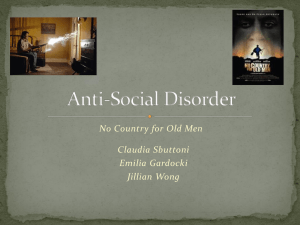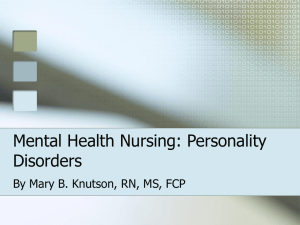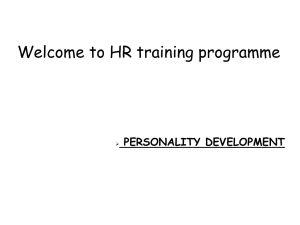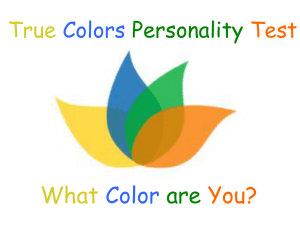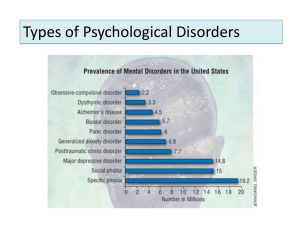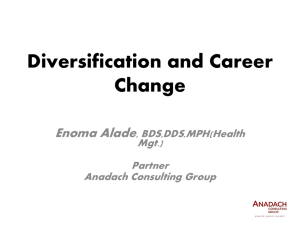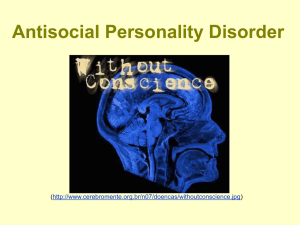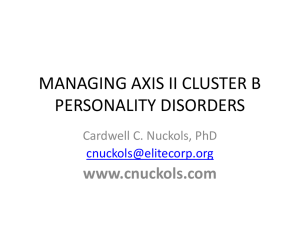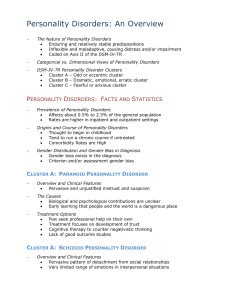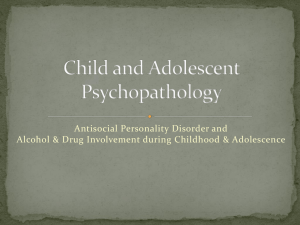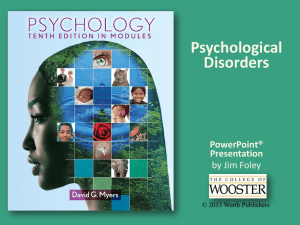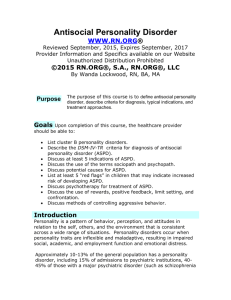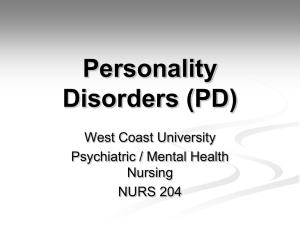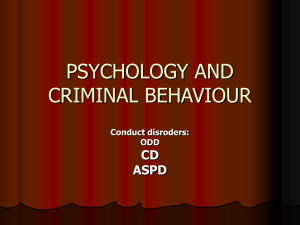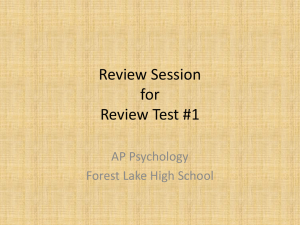Analysis on Causes of Antisocial Personality Disorder on the Basis
advertisement
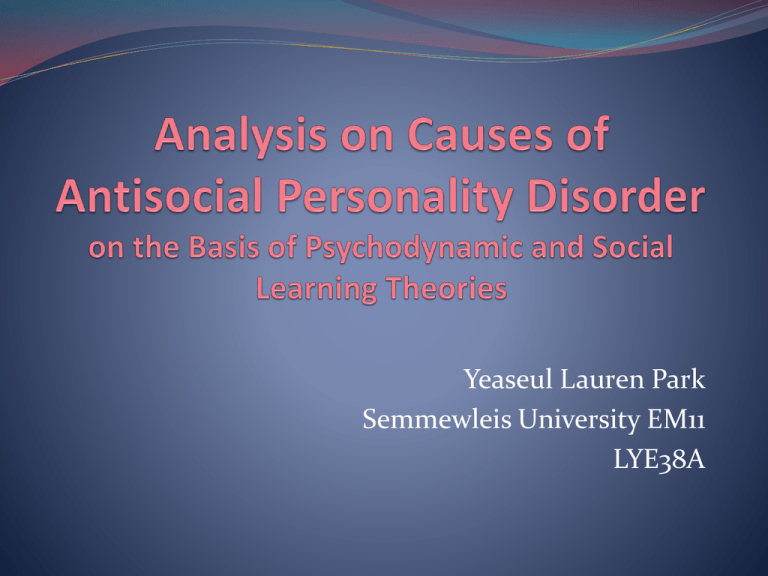
Yeaseul Lauren Park Semmewleis University EM11 LYE38A Introduction Personality and Personality Disorder – – – – – – Personality predictable, stable characteristics unique behavioral tendencies from one’s daily life indicates who a person is Criteria of Personality Disorder Inadaptability to society with fixed habitual actions Thinking mechanism and/or Excessive use of coping mechanism that cannot satisfy one’s needs – Paranoid vs. Histrionic vs. Avoidant types. Antisocial Personality Disorder Histrionic type personality disorder Avoidance, Irrationality, and Immorality Emotional immaturity and lack of responsibility Do not observe the social rules Cannot process learning from experiences Extreme self-centeredness Lack or absence of ability to form emotional connections with members in society Approach 1. Freud’s Psychodynamic Theory Unconsicous plays a more prominent role in mental health Personality: Id + Ego + Superego Superego Theory: Ego-Ideal and Conscience Approach 2. Bandura’s Social Learning Theory Personality: Environmental + Cognitive factors “Reciptrocal Determinants” Results Prevalence 3% in male and 1% in female populations (men are 4-7% more prone to experience ASPD than women) About 1% of the population suffers from ASPD *Constantly Rising phenomenon Results Freud’s Theory Characterisics in ASPD – Strong Ids and Weakened Superego – Too little contribution of the Superego toward their mental – – – – – functioning Excess defense mechanism isolation Possible Cause Childhood experience “Unconscious” : Accumulation of impulses Potential Treatment Free association Dream anlaysis Results Bandura’s Theory Characterisics in ASPD – Lack of ability to self-regulate – Decreased ability in predicting consequences of their – – – – – behaviour Possible Cause Negative family environments Result of inappropriate modeling Inappropriate learning process developed in childhood Potential Treatment Inner personal regulation (self-reguation, -judgement, etc) Through reinforcement and modeling Conclusion Environmental AND Biological … ? The causes of personality disorders, including ASPD, are difficult to clearly describe. Disorders are ambiguous in their definitions and symptoms Neither of the two approaches discussed can fully address all factors to the development of ASPD **Further research question: Importance of biological or genetic factors in ASPD prevalence. References 1. Edwards, R. D. (2009). Antisocial Personality Disorder. Retrieved from http://www.medicinenet.com/antisocial_personality_disorder/ article.htm 2. Engler, B. (8E.). (2009). Personality Theories. New York: Houghton Mifflin Publishing Company. 3. Ganzzaniga, S. G., & Heatherton, T. F. (2E.). (2005). Psychological Science. New York: W.W.Norton &Company. 4. Long, W. P. (2008). Internet Mental Health: Antisocial Personality Disorder. Retrieved from http://www.mentalhealth.com/dis/p20pe04.html 5. McGilloway A. et al. (2010). A systemic review of personality disorder, race and ethnicity: prevalence, aetiology and treatment. BMC Psychiatry, 10(33). Retrieved from http://www.biomedcentral.com/1471-244X/10/33 6. Sansone R. A. et al. (2011). The Prevalence of Borderline Personality Disorder in a Consecutive Sample of Cardiac Stress Test Patients. Prim Care Companion CNS Disord, 13(3), PCC.10l01087. doi:10.4088/PCC.10l01087

